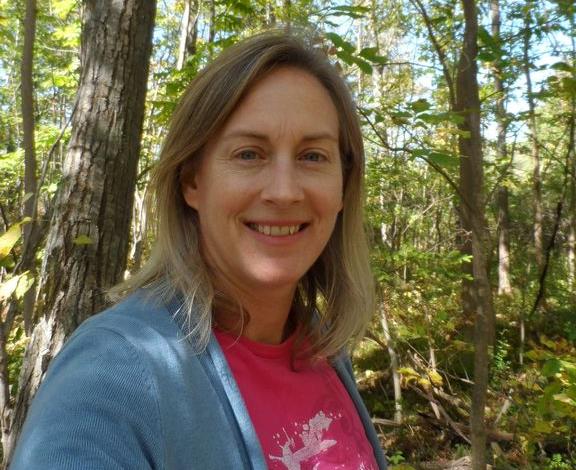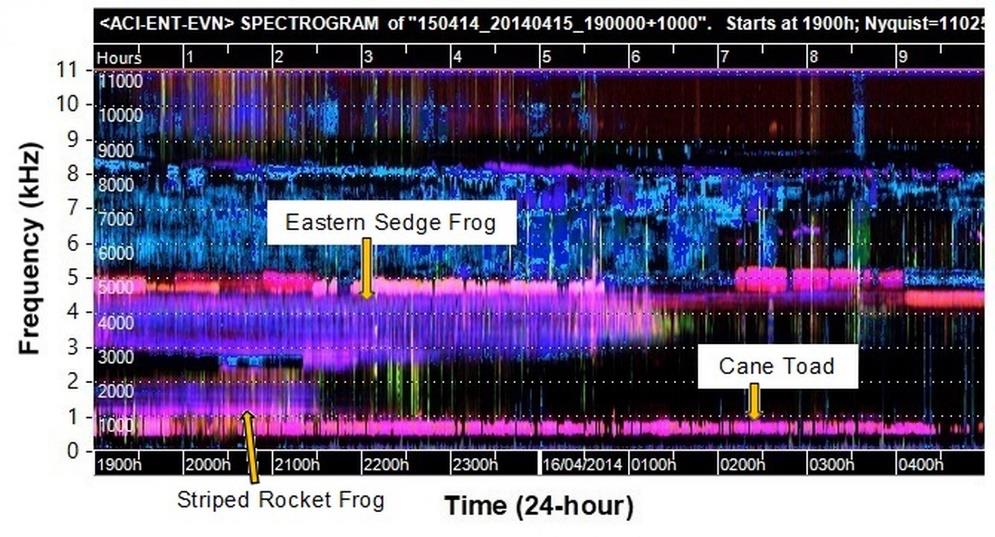CONGRATULATIONS TO SHERYN BRODIE, RECIPIENT of the 2022 Ric Nattrass Research Grant! Sheryn is currently undertaking her PhD at James Cook University in Townsville, and she describes her research below.
For my PhD research, I am using environmental sound recordings to investigate the chorusing patterns of a community of frogs in North Queensland. Acoustic monitoring is an important method for studying frogs in their habitat – males are highly vocal, and their calls give away their location and breeding intentions. Sound recorders designed for recording automatically and continuously in the field are now cheaply available, and this allows us to record the natural vocal behaviour of animals continuously at multiple locations and over longer time frames. This increased scale of acoustic data provides opportunities for studying the chorusing behaviour of whole communities of frogs over seasonal time scales and beyond. Long-duration sound recordings can easily be collected, so the current challenge is how to analyse the vast amounts of audio and extract useful data on the species of interest.

Sheryn Brodie, recipient of the 2022 Ric Nattrass Research Grant. Photo provided by Sheryn Brodie.
I have a large set of sound recordings made at several frog breeding sites at Hervey Range, near Townsville. Every night over a 19-month period (including two wet seasons) I captured the chorusing of 17 frog species. Recording at 6 sites resulted in more than 33,000 hours of audio – this would take one person working full-time about 17 years to listen to!
Using these recordings, the aims of my project are to: (i) investigate computer-aided methods to extract data from long-duration recordings that can be used to answer ecological questions; (ii) describe the chorusing patterns of a community of frogs in a tropical savanna and investigate the main environmental drivers; and (iii) investigate the acoustic interactions and potential impacts of the invasive cane toad on the acoustic behaviour of native frogs.

An example of a false-colour spectrogram of a single night recording in Sheryn’s project.
In the first stages of my PhD, I investigated two methods for analysing long-duration recordings by applying acoustic indices. The first was an attempt at automated species identification using acoustic indices and machine learning algorithms. This worked okay for commonly calling species, such as Cane Toads and Eastern Sedge Frogs, but it requires a lot of work to label data to train the algorithms and, like any automated method, gives many false-positive detections. Automated species call detection is an ongoing challenge that is not yet readily available for many frog species, particularly for studies of communities of many chorusing species. I then applied a method for visualising sound recordings using acoustic indices called ‘false-colour spectrograms’, and developed this for detecting the choruses of frogs in my acoustic data set. The false-colour spectrograms, it turns out, are quite useful for ‘seeing’ frog choruses in sound recordings, and I even learned to identify some species visually.
The final chapters of my thesis will use the data I collected from analysing the recordings using false-colour spectrograms to answer the second and third project aims. These studies will describe the chorusing phenology of every frog species detected, investigate the environmental drivers of calling, and explore acoustic interactions among species. So, by the end of this year I will have some very interesting insights into the chorusing behaviour of the tropical savanna frogs of North Queensland to report to the QFS.
We wish Sheryn all the best with the remainder of her PhD, and look forward to receiving updates later in the year! If you want to read more about Sheryn’s work, her previously published research can be found here.


